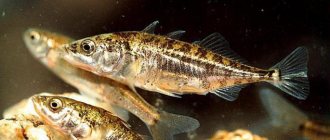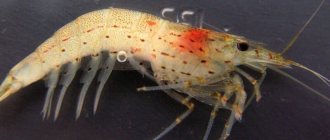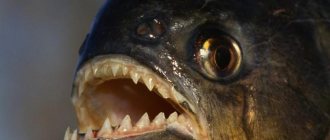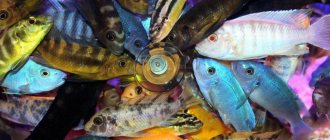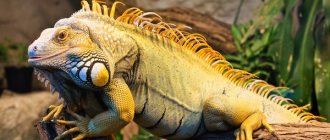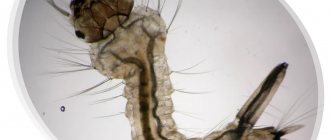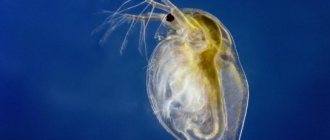The coastal waters of the Pacific Ocean are fraught with many dangers. For example, the blue-ringed octopus (hapalochlaena) is found here. An encounter with this representative of the underwater world can be fatal even for humans, since there is no antidote for its poison. But the beauty of this creature fascinates and attracts attention. Although for other underwater creatures it is a warning of danger.
Axolotl (water dragon)
These are the most interesting animals for an aquarium. Axolotls reach only 15 cm in length, in rare cases - 30 cm. In appearance, they are slightly reminiscent of salamander larvae due to the characteristic external gills and caudal fin. The head of a water dragon is flattened and wide, there are no eyelids on the eyes, and there are small teeth. The limbs are poorly developed.
Water dragons come in 4 colors: 2 natural shades and 2 artificial ones. Natural colors are brown with spots and black. The ones that have been bred include light pink and gold.
In the wild, the axolotl feeds on insects, small fish, and worms. In captivity, its diet may consist of trout pellets, bloodworms, and live or thawed earthworms. The water dragon likes small shrimp and beef liver.
Axolotls determine the location of food by smell. Having discovered it, they pull it in with great force. You should not place other animals in the same aquarium with a water dragon: small neighbors can be eaten, and large fish can cause harm (they often gnaw on the gill stalks and appendages of the axolotl while it sleeps, which can lead to infection).
The water dragon lives at a temperature of +14...+20°C. If the animal is sick, the indicator should be reduced to +10°C to avoid an increase in the pet’s appetite. To create a microclimate in the aquarium, it is recommended to use a special cooling unit, a filter and a water purifier from chlorine.
1 individual should be kept in a 50 liter container with a water level of 150 mm. It is permissible to use an aerator. It is necessary to change 20% of the water weekly. It is not advisable to line the bottom with fine gravel, because the axolotl can swallow stones.
The aquarium should contain floating plants that the pet will use as shelter, and small caves. Too much light is not required because the water dragon is a nocturnal animal.
What will biologists tell you about?
The blue-ringed octopus is a cephalopod from the genus Octopus. The first description was made by Guy Robson, around 1929. Three species of these mollusks are reliably known, but the existence of a fourth, unstudied species is assumed:
- Large blue-ringed octopus.
- Southern blue-ringed octopus.
- Blue-striped octopus.
The species, whose existence remains in doubt, is called Hapalochlaena nierstraszi in Latin. It was discovered in 1938, but only one specimen caught the eye of the researchers, and scientists were unable to obtain repeated material for study.
Keeping newts at home
This is a group of tailed amphibians, which have a large number of species and subspecies. Only a few of them are suitable for home keeping.
Lissotriton vulgaris
The common newt grows to a length of only 7-11 cm. Females are slightly smaller than males. The body color is from greenish to brown, the belly is yellowish or light orange. During the mating season, males develop a crest.
For a comfortable living, a newt needs an aquarium with a volume of 15 liters or more. Inside you need to arrange 1 or several islands, because the animal comes onto land from time to time. The water temperature can vary from +18 to +22°C. For the wintering period it is reduced to +5..+8°С.
The soil must be of a coarse fraction so that the newt cannot swallow individual particles. To maintain the nitrogen cycle, you need to place live plants in the terrarium. Dense thickets also create conditions for reproduction. The female lays eggs in them and tucks the leaves so as to provide reliable protection for the offspring.
You need to change 15-30% of the water per week. A filter is required that will pump the entire volume of the aquarium 6-10 times in an hour.
Newts are predators, so they happily feast on small live fish, earthworms, and crickets. They eat frozen bloodworms well. You can give pieces of low-fat fish and shrimp. Young animals are fed daily, adults - 2-3 times a week. It is recommended to periodically give vitamin complexes and calcium.
Newts can molt. Amphibians then eat their old skin.
Keeping them with fish is problematic because the latter love warmer water. For the winter, the newt will have to be placed in a separate terrarium. In addition, the amphibian can eat small fish.
- Newts sometimes get sick. Pathologies arise due to infections, parasites and fungi. The most dangerous disease is “red leg” or sepsis.
- The main symptom is bleeding under the skin of the abdomen and upper paws, which is why the latter acquire a bright red color.
- The sick animal should be immediately isolated and therapy should be started.
- First, it is recommended to go to a veterinary clinic and get tested.
Pleurodeles waltl
The spiny newt is larger than Lissotriton vulgaris.
Its length is 23 cm, so the amphibian needs a larger terrarium. When keeping this species, it is necessary to take into account that on the sides of the animal there are pointed ends of the ribs, which can secrete a toxic substance.
The liquid causes an allergic reaction. It is better not to take it with your bare hands.
Triturus cristatus
The crested newt is a medium-sized species of amphibian, growing up to 18 cm.
Representatives have an intermittent crest. Newt skin contains poisonous glands.
What does it eat?
The ocean has prepared a fairly extensive menu for the cephalopod predator. The blue-ringed octopus hunts for shrimp, hermit crabs, small fish and crabs. In their hunting habits, these mollusks resemble spiders. Of course, octopuses do not weave nets; they pounce on small animals, pierce (bite through) protective shells, and inject poison into the body. The victim is paralyzed, she loses the ability to resist, and the tissues of her body gradually soften. The octopus can only suck the pulp out of its shell.
Varieties of shrimp for home
- Babaulti shrimp is bright green in color. These sea crustaceans are capable of changing the color of their body to light brown or red. The shade depends on the animal’s mood, nutrition and living conditions.
- Blue Dream does not require a special habitat arrangement. The main thing is the presence of a sufficient amount of vegetation, moss and driftwood. It is advisable to build a secluded place for the crustacean and add dry oak or beech leaves.
- Cherry is a selectively bred shrimp. She spends a lot of time just sitting still. Therefore, it is important to arrange a shelter in the form of green thickets in the aquarium. They hide there even after molting.
The Far Eastern is a transparent sea crustacean with dark horizontal stripes throughout the body. Its color depends on the color of the food and the shade of the soil. Size - about 5 cm.
Some representatives of the genus Macrobrachium reach a length of up to 15-20 cm.
- Pinocchio is a transparent sea crustacean with a red nose.
- Snowflake is a very small crustacean, 2-2.5 cm long. Necessary conditions for keeping are filtration, aeration, and the absence of an excessive concentration of nitrogen compounds.
- Glass - grows up to 4 cm in length. Lives 1-1.5 years. An almost invisible animal needs shelter. These can be dense thickets, heaps of stones, snags.
- The body color of the cardinal shrimp is shades of cherry and red, with white specks on the sides. The crustacean's home should have a lot of aquarium plants, driftwood, and stones.
Riley was bred by a Japanese breeder. For breeding, an aquarium with a volume of up to 10 liters is required.
Suitable water temperature is +22…+28°C. It is recommended to keep these shrimp in groups of 10+.
In the aquarium you need to provide secluded places, which can be mosses or dense vegetation.
Guppies and mollies
akvariumnyerybki.ru
These beautiful viviparous fish not only look beautiful. They perform a very important function in aquariums and clean algae from slimy plaque. Despite this, guppies and mollies need to be fed regularly. Nutrition must be complete, therefore it is necessary to offer the fish dry and frozen food of plant and animal origin.
reefcoral.ru
Know that both fish are among the top 10 most unpretentious fish to keep in an aquarium.
Dwarf crabs and larger specimens
In addition to fish, freshwater crabs can be bred in an aquarium.
- The smallest is the dwarf spider crab. It rarely reaches even 1.5 cm in length. Representatives of this species are harmless, do not damage aquarium plants, and do not conflict with small fish and crustaceans. They feed on shrimp food.
- The red mangrove crab often comes to land, so it is important to arrange a special island in the aquarium. His home must be carefully closed to eliminate the possibility of escape.
- A small tomato crab feels quite good in an aquaterrarium. The animal freely climbs along the joints of glass and power cords of equipment, so the container must be covered with glass or mesh.
- The blue crab is larger in size. Its conditions of detention are the same as those of the mangrove. However, the diet is more vegetarian. These animals love, for example, oak or almond leaves.
- The rainbow crab is the most unusual representative of arthropods. Its shell is blue, its legs are orange, and its belly is white with blue veins. In captivity, it lives from 7 to 10 years, eating fruits, vegetables and meat.
For maintenance you will need an aquarium 60 x 45 x 45 and high-quality slightly salted water.
Appearance Features
The blue-ringed octopus is a small creature. On average, it weighs about 100 g with a body length of no more than twenty cm. However, the mollusk is very aggressive and fabulously beautiful. Its skin is yellowish-brown. About six dozen blue or light blue rings with a black rim are drawn on it in a bright ornament. Therefore, the name blue-ringed octopus is sometimes found. This proves that the rings of the deep dweller come in different shades.
When a small clam gets angry, its skin becomes covered with brown spots, and the rings become brighter and more noticeable. This reaction is not unique to octopuses. The blue-ringed octopus, like other species of cephalopods, has special cells that produce chromatophores. However, other species use this feature for camouflage rather than intimidation.
Features of keeping crayfish at home
For 1 arthropod, a container of 30-40 liters is enough. If you plan to house several individuals, the minimum volume should be 80 liters. Shelters such as a cave or a pot are installed in the home. Crayfish eat each other, especially during the molting period, so there must be enough places where the animals can hide.
To purify water, it is better to use an internal filter, because crayfish can easily get out through the hoses, and without liquid they do not live long. In addition, the aquarium must be tightly covered.
Crayfish are given special food. Once a week they are pampered with pieces of fish fillet and shrimp.
It is not worth feeding protein foods often, because they increase aggressiveness.
It is not recommended to keep crayfish together with fish, because the latter will soon be eaten.
Aquarium frogs
The albino clawed frog is the most common species. One individual requires a 10-liter container. Suitable water temperature is +18…+22°C. Keeping at 24-26°C is acceptable, but the frog's life expectancy is reduced. The maximum body size is 8 cm, but some individuals reach a length of up to 16 cm.
To equip your home, you will need a powerful filter that will cope with the volume of dirt produced by frogs. The device should not create strong currents, because in nature the animal lives in stagnant bodies of water. The aquarium must be covered with a lid, leaving only a small gap for oxygen to enter.
The diet of this amphibian consists of small bloodworms, planktonic crustaceans, earthworms, and lean meat. Frogs are prone to overeating, so the owner must control the amount of food. It is enough to give food 2 times a week.
Hymenochirus grows to only 4-6 cm in length. This amphibian has thin legs, a rounded body and a pointed snout. You can keep a frog in a 5-liter jar with a filter.
Comfortable water temperature – +24…+26°С. The animal is fed bloodworms, daphnia, and tubifex once every 2 days.
Octopus at home
The octopus is an intelligent exotic animal. In captivity it grows up to 20-25 cm in diameter. The mollusk requires a housing with a volume of at least 350 liters with filters that not only purify the water, but also make its chemical composition optimal.
Constant aeration is also important. Octopuses are demanding on water quality. Coarse sand and coral chips are poured onto the bottom in a layer of 7-9 cm.
There should be shelters for the octopus in the aquarium. The container must be covered with a lid or plastic grill. Provide moderate or dim lighting and completely exclude sunlight.
Octopuses remember their owner. But you need to approach your pet quietly and slowly so as not to scare him and prevent ink from being released.
Otherwise you will have to change the water. Under poor conditions, the animal gets sick. The mollusk's body becomes lighter, it stops eating and goes into its shelter.
Varieties of snails
Snails are considered the same full-fledged inhabitants of the aquarium as fish, crayfish, and shrimp. Some species of these gastropods are beneficial, others are dangerous to plants and their own kind, and many are neutral aquarium residents.
Yellow ampularia
Ampoules do not require special living conditions. A snail measuring 5-15 cm needs 9 liters of water. The aquarium should be spacious and enclosed, with sufficient air space.
They can live together with viviparous fish. Neighborhood with predators that can eat them is considered undesirable. The snails themselves feed on fish food.
The female lays eggs on the walls of the aquarium and only at night. Offspring appear after 25 days.
Apple snails live for about 4 years, but with a sharp increase in temperature, the duration is reduced to a year. For a comfortable existence, it is necessary to maintain water in a state from +17 to +30°C.
Thiaridae melanoides
This type of snail is quite popular.
Melanias often start in an aquarium on their own, getting there along with plants that contain melanoides eggs. Comfortable water temperature is +20…+ 30°C.
The size of an adult does not exceed 3 cm in length. These snails live at the bottom without interfering with the life of their aquarium neighbors.
They feed on plants and waste from other fish. 1 melania egg contains up to 60 small snails.
Little fiza
Physa, thanks to the special structure of its shell, can climb into the farthest corners of the aquarium. The size of the snail is only 2 cm. These gastropods breathe with lungs, so they can live without water.
Fiza loves to eat fresh leaves from living plants. The snail lays eggs (at least 20 pieces) on objects under water. Physa cleans the aquarium of bacteria, dirt and food debris. The optimal water temperature is from +20°C.
Predatory Helena
This representative of the gastropod class is capable of destroying not only its relatives, but also its own kind.
Helena is introduced into the aquarium to control the number of snails.
It burrows into the ground, so sand or fine gravel must be poured onto the bottom. If there are no other snails, Helena feeds on fish food.
This creature is characterized by low fertility. Helena lays only 1 egg. Of the small mollusks, a minority survive to adulthood.
Zebra and tiger snails
Neretina are freshwater snails that are the best algae killers in the aquarium. The most interesting are 2 types:
Zebra
Tiger
Neretinas do not live long - about a year. Some individuals die immediately after purchase due to a sudden change in conditions, while others can survive for 2 years. If a mollusk has died, it must be removed from the aquarium immediately so that it does not spoil the water.
Neretina are unpretentious in care and maintenance. They adapt to almost any water parameters, the main thing is to maintain the temperature regime - +24...+27°C.
You need to introduce snails into an established aquarium with a lot of plants. In order for a mollusk to form a shell normally, the water must be hard.
Neretins are quite active. They always leave behind a clean, fouling-free area.
In this case, the snails do not damage the leaves. They are active in feeding mode, and then can fall into a stupor for several days. If you have doubts whether your pet is alive, you need to smell it: a dead animal emits a noticeable unpleasant odor.
Other types
Planorbarius (coilfish) is a common species of aquarium clam. This small snail, only 3 cm long, breathes both in water and on land. Harmless coils feed on plants, food, and sometimes bacteria, cleaning their habitat. Planorbarius lay eggs on objects underwater. A month later, offspring emerge from the eggs.
Tilomelania are beautiful snails with an interesting shell shape. A mollusk up to 10 cm long needs grottoes and shelters where bright light does not reach.
It is advisable that there is enough free space in the aquarium: 1 individual requires a minimum of 15 liters. Tilomelanias like to be alone, but can be housed with a small number of fish or crustaceans.
These mollusks eat everything and a lot. If there is not enough food, they begin to damage the algae. Unlike other snails, tilomelania live in soft, warm water (+20... +32°C) with high acidity.
Features of reproduction
During the mating season, the male is overexcited and constantly ready to mate. Often he loses control over himself and females have to push their partner away. Mating ends with fertilization, after which the female makes the only clutch in her short life, which she will care for for up to six months. All this time the female remains without food.
The great blue-ringed octopus lays its eggs in a burrow, and the southern blue-ringed octopus attaches them to its tentacles. A week and a half after the appearance of the young, when the babies begin to feed on their own, the female octopus dies from exhaustion.
Aquatic turtles
Water turtles are chosen as pets due to their ease of care. The following are the advantages of their content:
- Unpretentiousness. For a reptile, it is enough to equip a suitable aquaterrarium and feed it correctly and on time.
- Inexpensive food. An adult is fed 2-4 times a week.
- Calm character. The reptile does not make loud sounds.
- Long life expectancy. A hardy animal can live 30-40 years.
Red-eared turtles
The average size of a red-eared turtle is from 25 to 30 cm. The exact parameters depend on the conditions of detention. Males are always smaller than females. At home, turtles live almost 2 times longer than their wild relatives (up to 40 years). This reptile has a well-developed sense of smell and vision.
They are able to distinguish colors both in water and on land. Turtles notice movement at a distance of up to 40 m.
A good sense of smell helps them find food. The hearing is poorly developed, the shell is sensitive to touch due to the nerves passing through it.
The red-eared turtle should be handled carefully because it may struggle, bite and scratch.
The reptile often becomes a carrier of salmonellosis, so it should not be allowed into the kitchen or places where food is prepared.
One individual needs a 200-liter aquarium, equipped with a water heater, a filter, an ultraviolet lamp, a thermometer, a lamp, and a shore (island). Large stones can be used as soil.
It is necessary to feed the reptile with special prepared food, vegetables, aquarium plants, insects, fish, and invertebrates. The amount of food needs to be controlled because turtles are prone to overeating. In addition, the pet needs water to swallow, because... does not produce saliva.
Varieties of Trionics
Trionix Chinese is an aquatic turtle up to 20 cm in size. The reptile has a soft leather shell and an elongated nose similar to a trunk.
These three-toed turtles are quite agile and aggressive. They often injure humans with their plates located on the jaws. A newborn is purchased for keeping at home.
The African trionics is a large turtle that reaches a length of up to 90 cm. The young grow quickly, in addition, the reptile bites. It is not recommended to keep this animal at home.
zverushca.ru
Many aquarium enthusiasts have recently been asking for information about keeping octopuses at home, so I decided to write a series of articles about these mollusks. I certainly share the passion for these amazing animals, because I myself have great sympathy for these intelligent and amazing creatures! I have been keeping and breeding octopuses as pets for many years now, and I continue to be amazed at their level of intelligence and personality (if you can say that about an animal) qualities.
I'm sure they will make wonderful pets if you take their special needs into account, they will adapt well to aquarium life and will be able to live out the entire life allotted to them by nature in captivity.
However, you must realize that these are not aquarium fish and the conditions for keeping them must be different, in addition, their natural life span is quite short. The lifespan of most tropical octopus species is only 1-2 years. Alas, that's all you can count on. So, as I said, these animals have special needs, so they are simply not suitable for keeping in reef aquariums, although their requirements are similar to this type of aquarium. In addition, there must be good water circulation and plenty of different shelters where the octopus could hide at any time. Therefore, a reef aquarium is not the best habitat for an octopus, but with a little modification it will be quite happy.
Although octopuses are invertebrates, and some species do occur on coral reefs, these animals are not particularly suitable for keeping in "reef" aquariums for many reasons, which I will try to outline below. But before I do that, I will try to give you some general information about the biology of these animals.
Octopuses are members of the mollusc family, making them distant relatives of a wide range of more familiar reef aquarium inhabitants, including chitons, snails, slugs, oysters and mussels. I advise anyone who is interested in more detail about this group to closely follow the site’s publications; I think they will appear in the near future. Along with squid, cuttlefish and nautiluses, octopuses are members of the genus of cephalopods.
They have enormous strength relative to their size (some species reach 70 -90 cm in length), but even the largest of them are actually very shy, spending most of the day hiding in cover and coming out to hunt at night. This is an animal that changes color depending on its environment, so it is difficult to immediately notice, even the wrinkles on its skin often look like a stone overgrown with algae. However, large fish such as eel or grouper often attack it, and to avoid attack and hide, the octopus releases a little black paint. These mollusks have very developed sense organs, with the exception of hearing, since they are completely deaf. They have great intelligence, excellent memory and learning ability. Have you ever wanted to buy an octopus for your aquarium? If yes, I am ready to share the secrets of its content in the next article.
Similar articles:
zverushca.ru
Unusual aquarium fish
- The black knife is one of the most unusual types of fish. In captivity it grows up to 50 cm, so it needs a spacious aquarium. There are practically no fins and no vision. Creates a small electric field around itself, thanks to which it finds food for itself. It feeds on bloodworms and mussels.
- The dragon wrasse is an exotic fish with an aggressive nature. It is active only during the daytime; at night it buries itself in the sand or freezes in place. For a young individual, 250 liters of volume is required, for an adult - from 500 liters. It feeds on the meat of sea fish, squid, and mussels. You need to give food 3 times a day.
- The blue dolphin is a calm aquarium inhabitant that grows up to 25 cm in length. This fish requires a container with a volume of 400 liters or more. Meat feed should be given in small portions up to 5 times a day.
- The box fish is shaped like a cube. It grows up to 45 cm. In nature, it feeds on algae and small crustaceans, so in captivity the diet can be combined.
